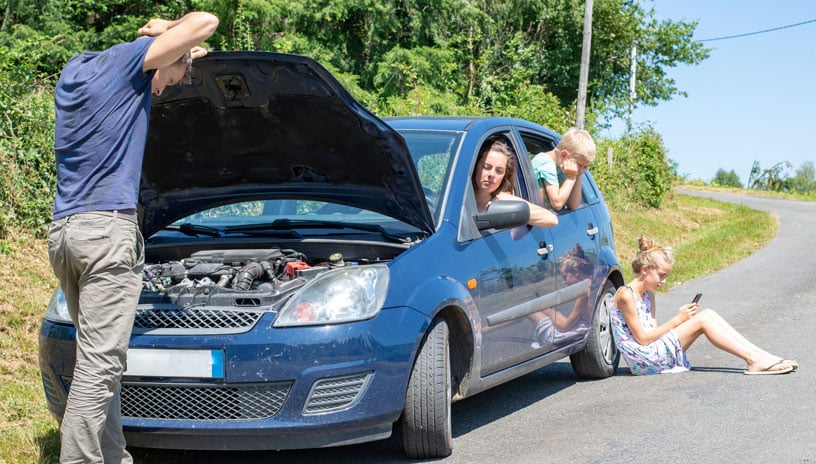An Emergency Road Kit – Just in Case

Here’s what you need to be prepared for the unexpected while on the road.
Why Do You Need an Emergency Road Kit?
If you and your family plan to be among the millions of travelers hitting America’s roads this summer, now is the perfect time to prepare for the unexpected.
It doesn’t matter whether you’re planning a weekend getaway or a cross-country road trip. If you have an emergency road kit in your vehicle, you can turn a potential crisis into a manageable inconvenience.
Emergencies don’t wait for good weather or a convenient location. That’s why every driver should keep a well-stocked emergency road kit in their car—just in case.
What Should You Pack?
The goal is to cover your basic needs until help arrives. Start with these essentials:
- First Aid Kit: for basic injuries that are bound to happen when you travel.
- Personal medications: keep extra available in case you’re gone from home longer than expected.
- Water and Snacks: Bottled water and energy bars work well.
- Phone Charger or Power Bank: Stay connected when it matters most.
- Rain Ponchos: Stay dry in rainy conditions.
- Flashlight and Extra Batteries: Because breakdowns don’t always happen in daylight.
- Jumper Cables or a Jump Starter: Dead batteries are one of the top roadside issues.
- Spare Tire and Tire Repair Kit: Flat tires always happen at the worst time.
- Reflective Triangles or Road Flares: Help others see you from a distance.
- Multi-Tool or Basic Toolkit: For small, quick fixes.
Finally, don’t forget special items for those with special needs. Consider packing extra diapers, powdered formula, and bottled water for infants, and appropriate food supplies for toddlers and those with allergies. Having an updated list of routine medications, allergies, and personal physician/ emergency contact information for every person in your vehicle is also a good idea.
Seasonal Adjustments
You should adjust the items in your emergency road kit with potential weather conditions in mind. For example, blankets or emergency thermal blankets are especially important in cold-weather climates.
Likewise, summer temperatures can take a toll on your vehicle and your body. The following items could prove invaluable during a warm-weather roadside emergency:
- Sunscreen and a wide-brimmed hat to protect yourself from sun exposure if you’re stuck roadside.
- Electrolyte drinks or powdered hydration packets to replace fluids lost through sweating.
- A battery-operated fan or cooling towel to help manage extreme heat.
- Extra water in your kit—more than you think you’ll need.
- An insulated cooler to hold ice or cold water.
Maintain Your Emergency Road Kit
Your emergency road kit isn’t something you prepare once and forget. Regular maintenance keeps it effective and reliable when you need it most.
- Inspect Quarterly: Every few months, inspect your kit for expired food, first aid supplies, and bottled water. Replace items that are nearing expiration.
- Test Electronics: Ensure your flashlight functions properly and that your power bank is fully charged.
- Fresh Batteries: If you rely on battery-powered tools, avoid leaving alkaline batteries stored in your tools or kit. Instead, check that you have fresh, spare batteries stored in a separate container for emergencies.
- Restock After Use: If you’ve used any part of your kit—even something small like a bandage or an energy bar—replace it immediately.
Be Prepared—Travel Safe
While no one plans to face a roadside emergency, having a fully stocked and well-maintained emergency road kit puts you in control when things don’t go as planned.
The Moultrie County Health Department encourages you to build your kit. Check it regularly and restock after items are used and when the weather seasons change. Taking these steps will allow you to enjoy your travels this summer and all year long with the confidence that you’re ready for anything.

